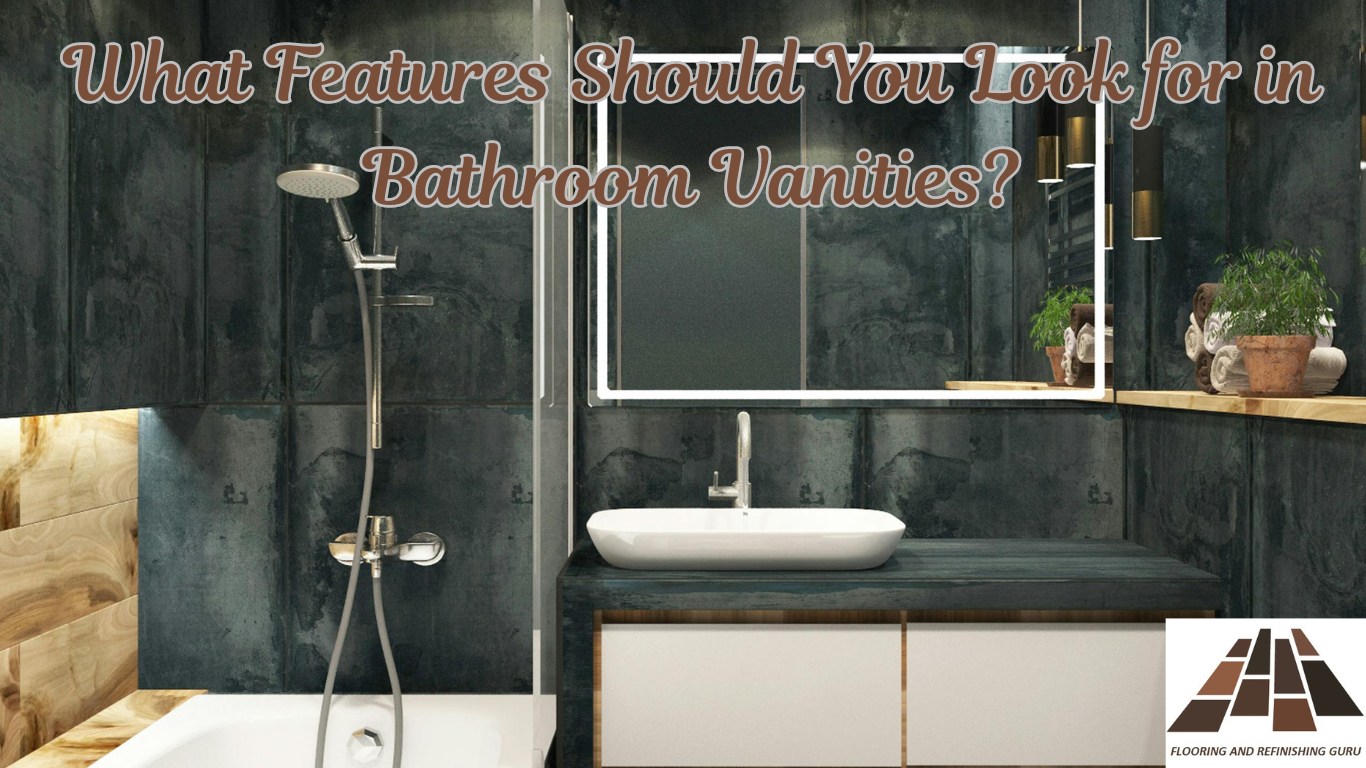If choosing bathroom vanities is not only about appearance, then there are a number of things you need to look for. Space compatibility, usefulness and personal preferences are some of the factors that must be taken into account when selecting a vanity. What do we need to focus our attention on? Let’s check into the key features that require consideration.
1. Size and Dimensions
The size of your bathroom vanities is one of the first things you need to think about. Before making a choice, measure your bathroom carefully. Consequently, avoid choosing one that is too large because it might dominate over other things in this room or too small in which case storage may become a problem. To avoid such errors, consider length, width and height dimensions before handpicking any item.
2. Storage Solutions
Storage is crucial in choosing a bathroom vanity. Think about the amount of storage that you require. Are there a lot of drawers for your toiletries or perhaps some shelves for towels? For a well organized and free from clutter bathroom, opt for vanities that have a blend of cabinets, drawers as well as open shelves.
3. Material and Durability
Your bathroom vanities are determined by its material in terms of beauty and long life span. The commonest materials are solid wood, plywood, and MDF. Solid wood lasts longer while MDF and plywood may be cheaper but they are also less sturdy. Ensure the material can cope with humidity in your bathroom.
4.Countertop Material
The countertop on your bathroom vanities should be functional as well as fashionable. Granite quartz and marble are a few materials usually chosen because they last long and are easy to clean at the same time. As it resists marauders from discovering any stains or scratches granite or quartz appear elegant in the bathroom but keeping them clean could be challenging like ilium has other uses.
5. Design and Style
Your bathroom vanities must match your bathroom design. Regardless of whether you are into modern, traditional or rustic designs, there is a vanity for you. For the sake of good appearance, consider such the finish used in making it, its hardware and other aspects that may affect its general design so that it can fit well with what you have already put on display in your bathroom.
6. Sink Type
The type of sink that comes with your bathroom vanity can determine how functional and aesthetically pleasing it is as an accessory. The choices include undermount sinks, vessel sinks and drop-in sink options respectively among others. In contrast, dropping in a sink is usually less complicated while vessel sinks tend to have more unique designs.
7. Height and Ergonomics
The height of your vanities must be comfortable for daily usage purposes. Regularly manufactured ones stand at about 32-34 inches high but there are taller ones available if you wish them so. Ensure that their heights suit everyone living under one roof together with you!
8. Lighting and Mirrors
Built-in lighting or places for mirrors are among the features of some bathroom vanities. Good lighting is essential for tasks like shaving or applying makeup. In case your vanity doesn’t have any light, keep in mind to choose fixtures that provide good illumination. Additionally, make sure that there is enough space to accommodate a mirror that goes well with the vanity.
9. Installation and Maintenance
Think about how easily it is to install and maintain a particular vanity. There are some vanities that you can install by yourself without any expert’s help but getting an expert may be necessary if it calls for advanced installation procedures. Furthermore, consider maintenance – select vanity materials that are easy to clean and maintain their appearance.
10. Budget
In conclusion, budget determines which kind of bathroom vanities one buys. Although the most stylish option may seem appealing, ensure that style resonates with function and cost too. It is possible to get value for your money through choosing among several wonderful options within different price ranges; therefore, you need not compromise too much on vanity prices in order to obtain what suits you best.
Conclusion
Choosing the right bathroom vanities involves considering size, storage, material, design, and your budget. By focusing on these key features, you can find a vanity that not only enhances the look of your bathroom but also meets your practical needs. Take your time to measure, plan, and select a vanity that fits perfectly into your space and complements your style.
Frequently Ask Questions
Q. What are vanities in the bathroom?
A. Bathroom vanities are cabinets or countertops that house sinks and provide storage, combining function and style.
Q. What is a vanity used for?
A. A vanity offers a surface for grooming tasks and storage for toiletries, integrating a sink and countertop into a cohesive unit.
Q. What is a bathroom vanity unit?
A. A bathroom vanity unit combines a sink, countertop, and storage, creating a practical and aesthetic centerpiece in the bathroom.
Q. What is the most common bathroom vanity?
A. The most common bathroom vanity features a single sink, countertop, and cabinet storage, often made from wood or MDF with a modern or classic design.
Q. Why are sinks called vanities?
A. Sinks are part of vanities because they integrate functional elements like plumbing with storage and surface space for daily tasks.
Q. Why is it called vanity?
A. The term “vanity” historically refers to personal grooming and appearance, making it an appropriate name for a unit used in bathrooms for such activities.



